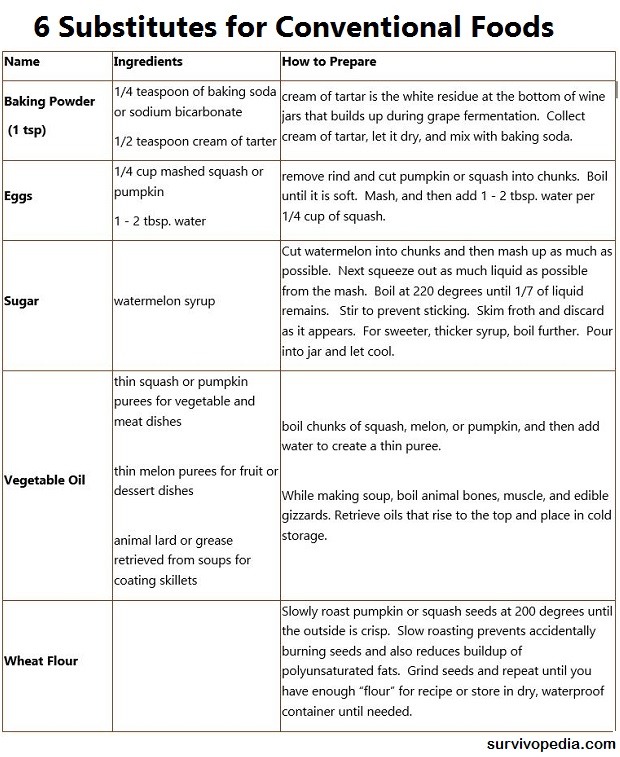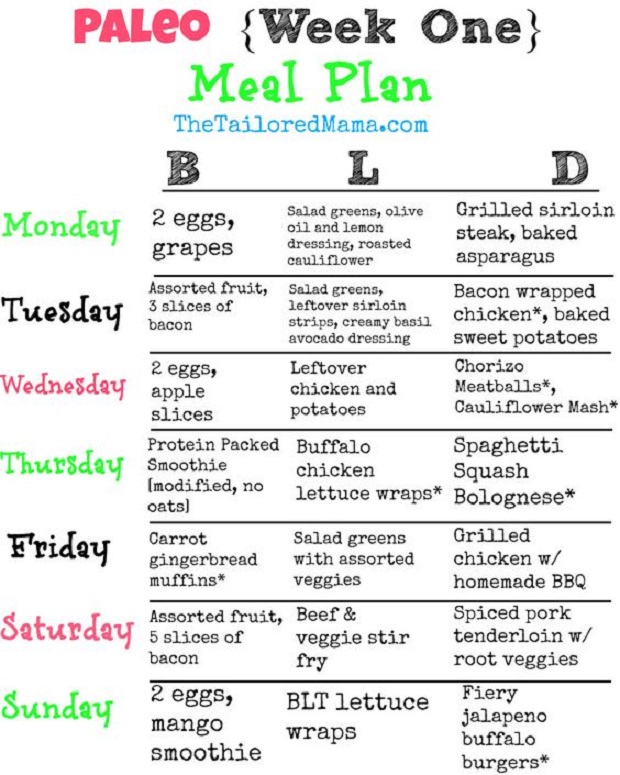Our ancestors were hunters and gatherers long before they began farming. They also rarely made use of cooked or processed foods. Many people today feel it is best to go back to the kind of diet our ancestors consumed, and choose to follow the Paleo diet.
The Paleo diet is meant to mimic the kinds of foods that our ancestors were able to find and eat with relative ease. This means consuming foods that are readily available in nature, and ones that require a minimal amount of preparation.
Just about any type of wild game or fish might be found in a Paleo diet, but you would eat very little milk or cheese. Berries, roots, and fruits tend to be favored over beans and grains that require special preparation.
Here are some common foods you might find in a Paleo diet. This includes foods that may not be readily available on supermarket shelves, but can be found easily enough in nature, or raised in aquaponic systems.
Recommended Meats
Meat is an essential part of the Paleo diet. Keeping a good supply of meat may be very difficult to some people, because you need to know key breeding seasons and the food requirements of targeted animals.
As you consider this list of healthy paleo meat sources, select a few of interest and see if you can raise them. Finding the best way to prepare alternative meats will also help you and your family in the quest of living a healthy life.
The conventional animal meats are chicken, pork, fish, beef, turkey, lamb, lobster, shrimp, goat, goose, quail, oysters, clams, scallops, crab, and bison. Other healthy Paleo meat sources are rabbits, rodents, young hedgehogs, termites, earthworms, grasshoppers, grubs, beetles, ants, snails, caterpillars (non-butterfly), deer, bear, buffalo, freshwater fish, clams, oysters, kangaroo, turtle, snake, and birds.
Recommended Dairy
Since dairy products require a good bit of preparation, they should be avoided as much as possible. Raw goat or cow milk may be permitted, but nut and vegetable blends are preferred. For example, you can use almond or rice milk, but should not use soy milk because it is made from legumes.
Eggs are allowed in the Paleo diet even though they are listed in the dairy food group. If chicken or goose eggs are not available, you can eat eggs from other bird species. Make sure you know when the breeding season starts for different bird species so that you do not destroy eggs with developing embryos.
Recommended Fruits, Herbs, and Vegetables
In the modern world, it becomes all too easy to believe that the vast majority of plants will flourish regardless of climate and seasonal constraints.
When it comes to adapting the Paleo diet to your needs, find out which plants are available in your area. At the very least, even if it takes time to raise crops, you can still make use of local plants to meet your nutritional needs.
- Conventional (Non-GMO) Fruits, Herbs, and Vegetables – Berries, apples, parsley, basil, thyme, rosemary, spearmint, echinachea, turmeric, sage, paprika, citrus, brussel sprouts, avocados, mango, plum, peaches, pumpkin, sunflower, melons, bananas, papaya, lettuce, figs, carrot, celery, spinach, broccoli, squash, cabbage, pepper, tomato, onion, eggplant, cauliflower, and artichoke.
- Healthy Paleo Fruits, Herbs, and Vegetables – Wild berries, dandelion, cat tail tubers, apples, lettuce, pumpkin, carrot, onion, broccoli, squash, pepper, tomato, onion, cauliflower, artichoke, seaweed, mushrooms, moss, basil, parsley, thyme, sage, spearmint, Echinacea, rosemary, paprika, and lichen.
Plant Based Foods to Avoid
As you look at the list of plants most suitable for a Paleo diet, you may be wondering why rice, wheat, beans, peas, potatoes, and peanuts do not appear on the list. While these foods were all derived from wild sources, it is believed that our ancient ancestors did not make use of them until they began growing things in domestic settings. They are considered less healthy than other foods that were easily obtained in nature.
The Recipes
Rather than follow precise recipes, you are best served by memorizing proportions of some basic staples, and then work with them based on the foods available at hand.
1. Baked Meat with Stuffed Peppers or Tomatoes
- 3 – 6 bell peppers or tomatoes
- 1 pound of beef, pork, or lamb
- 1/2 cups of broccoli or cauliflower (flower portion only)
- 1 cup of water
- 1 pound of tomato sauce or diced tomatoes
- basil and parsley for seasoning.
Remove tops and seeds from peppers or tomatoes so that only outer shell of flesh remains. Cut into bottom until shell sits straight in baking pan. Partially brown beef, pork, or lamb in animal lard or vegetable oil. Chop broccoli or cauliflower until it is grain sized. Stir in with meat and finish to brown.
Combine meat, vegetables, and tomato sauce in mixing bowl. Keep some tomato sauce aside for basting. Fill peppers or tomatoes with mix. Top off with basil, parsley, or other seasoning as desired. Bake at 350 for approximately 1 hour, or until pepper or tomato shells are soft. They will need to be basted 2 -3 times to prevent burning.
2. Basic Omelettes
- 2 eggs or egg substitute
- 1/4 cup onion
- 1/4 cup pepper
- 6 ounces of pork or chicken
- 1/4 cup tomato
- season with parsley, rosemary, thyme or basil
Sear chicken or pork in hot oil until surface is light brown. This seals in juices and also gives a better flavor to the omelette. Dice onions and peppers. Fry lightly in hot oil and set aside. Scramble eggs or prepare egg substitute and pour into hot frying pan. Fold meat, onions, peppers, and seasoning into the omelette. Add tomatoes last to keep them as crispy and fresh as possible.
There is also a baked version for this recipe: after frying meat, mix all ingredients together and pour into an 8 ounce baking dish. Cook at 350 degrees until center is cooked through, but before edges burn.
3. Vegetable Pancakes
- 2 eggs or egg substitute
- 1/2 cup of water
- 1/4 cup chunk tomato, pepper, or onion
- 1 tbsp powdered onion, rosemary, or thyme
- 1/2 cups ground roasted pumpkin or squash seeds
- 1/2 teaspoon of salt
- 1/2 teaspoon baking soda
Prepare ground seeds as noted in flour substitute table above. Chunk tomato, pepper, or onion. While you can also boil and mash vegetables for addition in pancakes, they taste better when left in chunks.
Prepare egg substitute or scramble eggs. Add ground seeds to water and stir until smooth. Fold in vegetables, salt, eggs and seasonings. Add a tablespoon of oil to griddle or pan and allow to heat up. Pour a few drops of batter onto hot griddle, and remove when drops are evenly browned.
Proceed to pour enough batter into pan to make individual 4 inch sized pancakes. Flip pancakes when bottom side is golden brown and remove from skillet when both sides are cooked and inside has sponge like consistency.
4. Protein Cookies
- 1 cup of boiled, mashed pumpkin or squash
- 1/4 to 1/2 cup boiled, ground dandelion leaves (can be bitter; so add to suit)
- 3 1/2 cups ground and roasted pumpkin seeds
- 1/4 teaspoon salt
- 1/4 cup of shredded chicken
Combine mashed pumpkin, ground dandelion leaves, and ground seeds. Mix in salt and shredded chicken. If dough is too moist, add more ground pumpkin seeds. Flatten out dough on cutting board and cut into 1 x 2 inch squares. Place dough on non-stick cookie pan. Bake for 20 – 30 minutes at 350 degrees until golden brown. Remove cookies from sheet and place on cooling rack as soon as possible.
5. Conventional Vegetable Chips
- 1 eggplant,
- 2 tomatoes,
- 2 peppers,
- 3 onions, or separated cabbage leaves
- 1/2 cup powdered dry basil, parsley and thyme
Slice eggplant, tomatoes, or peppers into 1/8 inch slices. For onions, slice into 1/8 thick slices and then separate rings. For cabbage leaves, remove from head one at a time, and try to keep them as whole as possible.
Arrange vegetable slices on a cookie sheet so that they do not overlap and brush with water. Sprinkle with powdered seasoning, but not more than will be absorbed by the water. Bake at 325 for 25 – 30 minutes. Remove from oven when chips are dry and start turning up at edges. Let cool and store in airtight container.
If done correctly, these vegetable chips will have a bit more texture from the cauliflower and broccoli bits.
The Paleo diet’s high energy foods and simplicity also make it ideal for living a healthy life. No matter how difficult times are, the Paleo diet will help you remain strong and healthy.
Remember that you need to stay healthy to be among the fittest who survive, and click on the banner below to find out more about the way our ancestors lived!
This article has been written by Carmela Tyrell for Survivopedia.







































































Thank you for sharing these 5 amazing and healthy recipes.
I loved it!
These are great additions to my favourites.